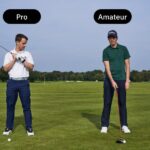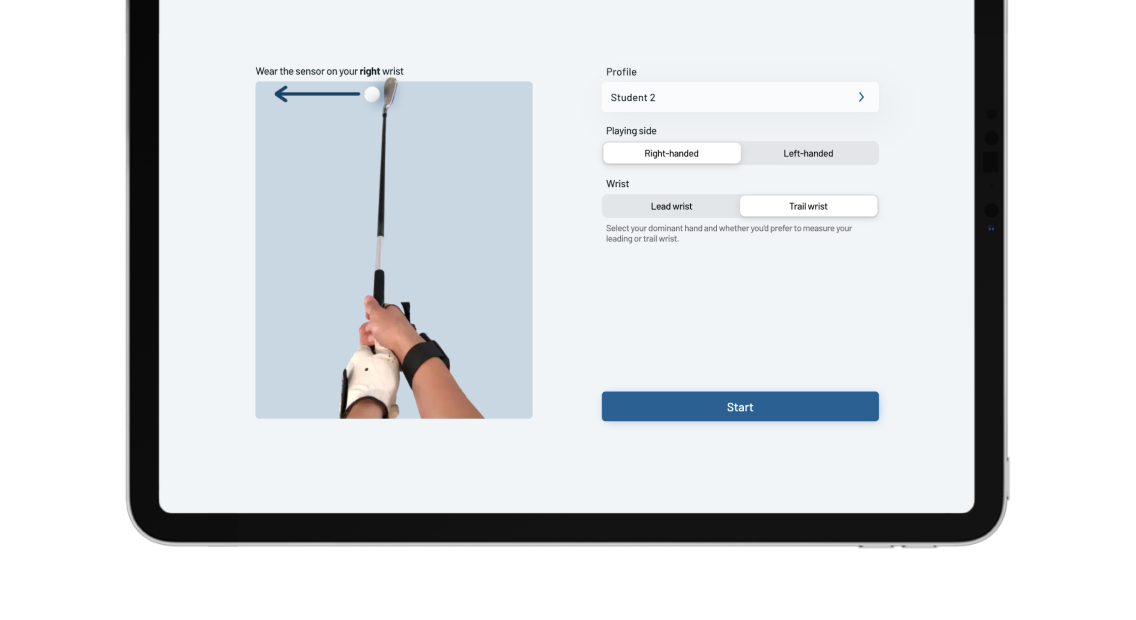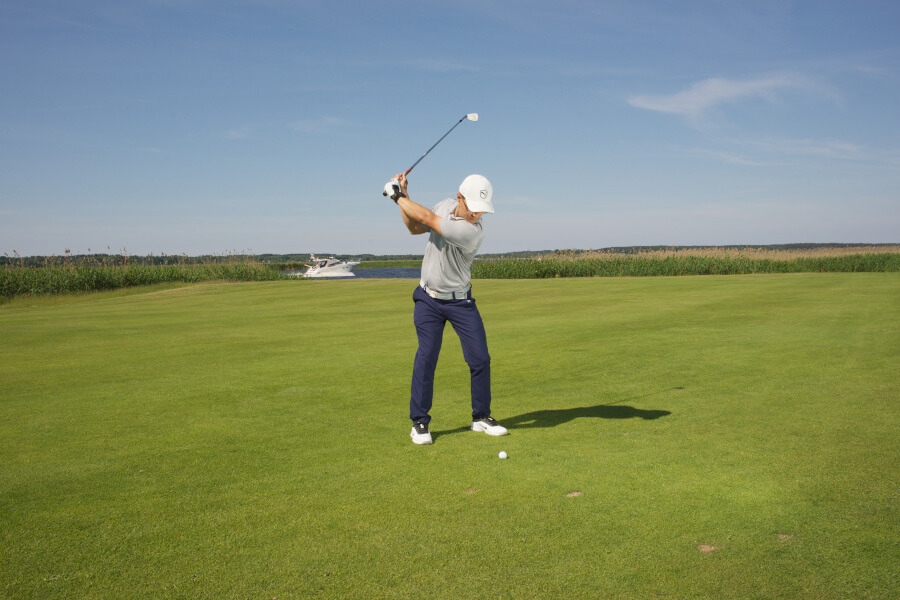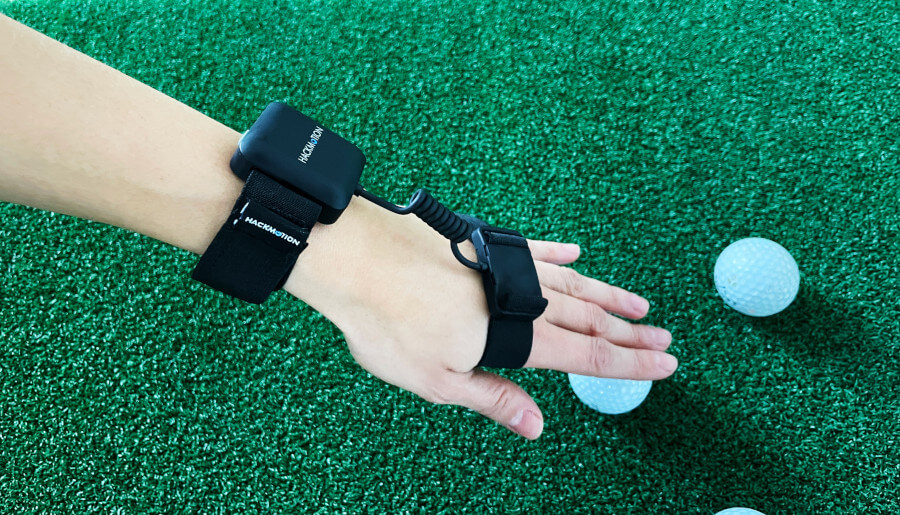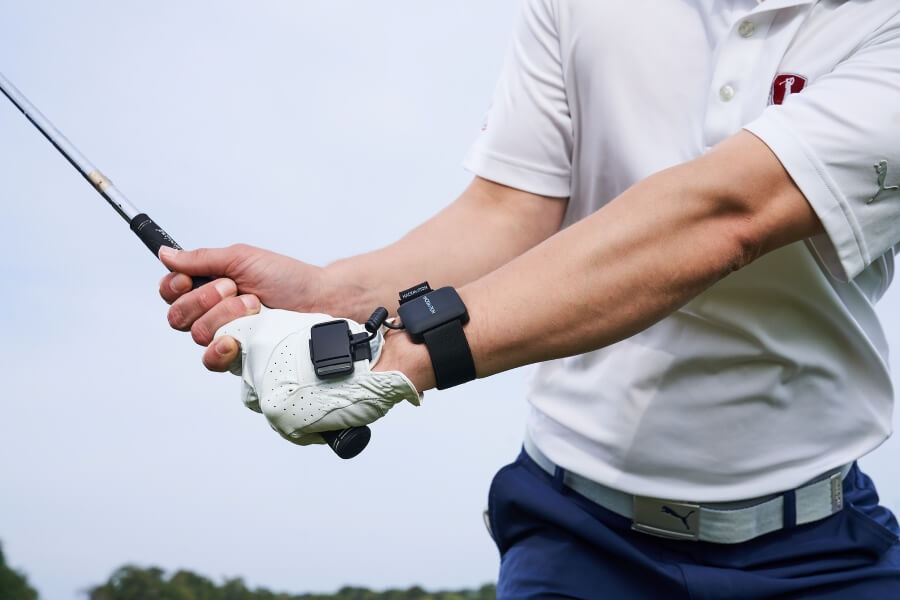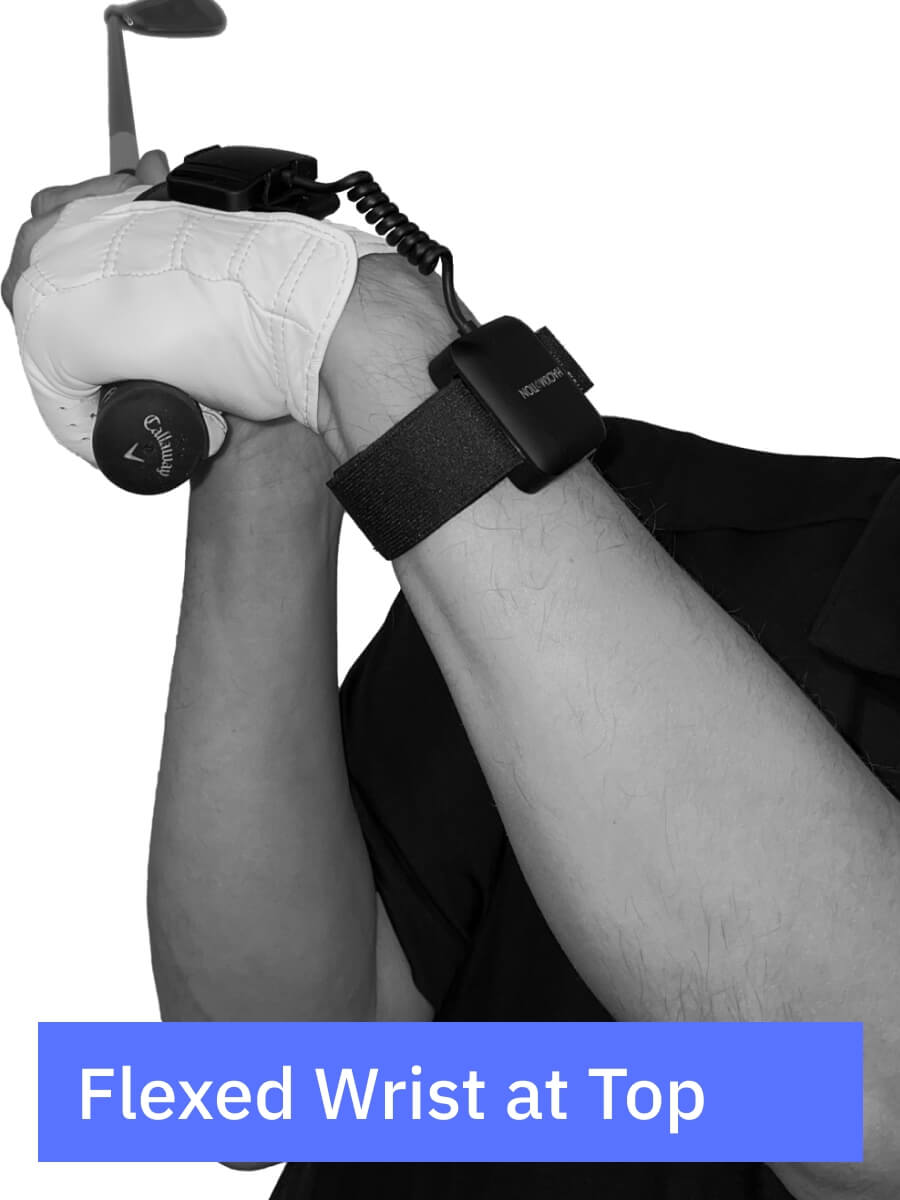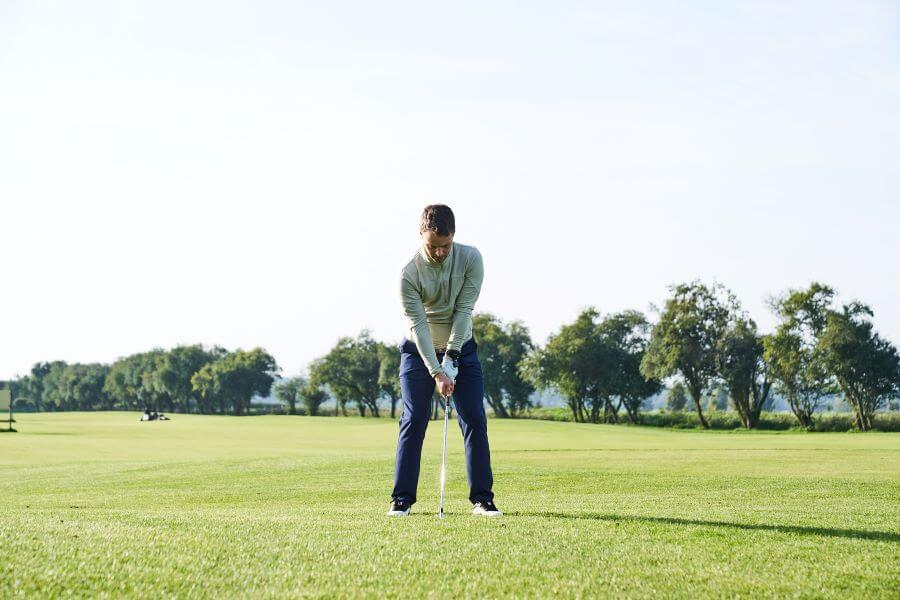Flat Left Wrist in Golf Swing: The Secret to Unlock Consistency
The HackMotion has measured more than 1,000,000 golf swings. With this kind of wrist data, we were able to make some pretty insightful conclusions on the proper wrist position at the top of the backswing and at impact.
Results were overwhelmingly positive regarding having a flat lead wrist throughout the golf swing. Yes, there are exceptions; there are players that can strike the ball with relative consistency without this flat lead wrist.
However, if you want to find the key to a square clubface and you are tired of messing around with things like path and plane, your answer is in the wrists. I’ll show you why a flat left wrist in golf is so important and how to get one!
Flat Left Wrist in Golf: Key Takeaways
Wrist position and wrist action in golf can get confusing. It’s a bit of a higher-level topic for golfers interested in improving and trying to understand the game.
Here are the basics of the flat lead wrist and its key to squaring up your clubface; more details can be found below.
- Initial wrist position matters, although the wrist at setup just needs to be within range in order to achieve a flat left wrist at the top. Different grip positions increase or decrease your chance of a flat left wrist, use the neutral grip whenever possible.
- Flat lead wrist position at the top of the backswing is directly related to having a flatter lead wrist at impact.
- With a flat or even slightly flexed left wrist at impact, the golf ball should fly further, have a more penetrating ball flight, and stay on its path.
- Using the HackMotion, you can measure, analyze and then improve upon your lead wrist position in the golf swing.
Contents
Wrist Positions in Golf Swing: Quick Overview
Before we get into fixing your flat lead wrist, it’s important to review how the wrists work in the golf swing.
There are three motions of the wrist that you must know, extension/flexion, radial deviation/ulnar deviation, and rotation.

Extension/Flexion
Extension is the bowing and cupping of the wrists. The flexion and extension in your wrists will directly control the opening and closing of the clubface.
Extension/flexion changes from setup to the top to impact. Wrist extension will open the face of your golf club; flexion will close it.
Radial Deviation/Ulnar Deviation
The radial deviation/ulnar deviation is the cocking and uncocking of the wrists. If your backswing has more radial deviation, it increases the amount of wrist cock; ulnar deviation decreases it.
For golfers looking for power in the golf swing, radial deviation and ulnar deviation are incredibly important.
Rotation
Rotation is the process of turning the entire wrist; for most players, you will feel as though your entire forearms rotate. Pronation and supination are the technical terms we use for wrist rotation.
Rotation at the top of the backswing will impact where the clubface can return to at impact. To hit a straight shot, you must be able to rotate your hands accordingly and get the clubface square.
What’s the Importance of a Flat Left Wrist in Golf Swing?
Let’s say you have been playing golf your entire life; you shoot around 95-100 each time you go out to play, and you know your lead wrist is anything but flat during the golf swing. What’s in it for you to change to the flatter left wrist?
Obviously, all golf swing changes and tweaks take a bit of time to master and to work through.
Here is what you can benefit from flatting out the left wrist.
- Increased consistency and a more repeatable swing: one good swing is nice, but if you want to play great golf, you have to put quite a few good swings together.
- More speed through impact: a flatter left wrist means a lot more speed through the impact position; with a square clubface, you can fire through the golf shot with no fear.
- Increase golf ball compression: when your lead wrist is flat, you can compress the golf ball and get a more penetrating ball flight with some extra distance.
- Square clubface: the position of the lead wrist is directly tied to the position of the clubface; the flat left wrist produces a square clubface at impact.
- Less dispersion: with a flat lead wrist, your golf shots should finish straighter than they do with a cupped or bowed lead wrist; expect fewer thin and fat shots as well.
Is a Flat Left Wrist Always Better?
Before we move into the best ways to flatten your lead wrist, I think it’s important to discuss whether this position of the wrists is actually the best.
We know that after analyzing more than 1,000,000 swings that there is no perfect wrist position. However, there are patterns that the best players have. These patterns include a flatter wrist position at the top of the swing that leads to a flatter wrist position at impact.
However, there are players like Dustin Johnson and Collin Morikawa that have a flexed position with their left wrist, and they play great golf. The key is that they still have a flat or slightly bowed wrist position at impact, something all players benefit from.
So the bottom line here is that if you are within range or close to having a flat wrist position, you will see better results. However, there is no exact wrist angle that is universal for all players.
How to Flatten Your Left Wrist?
You have most likely seen dozens of drills of how to get a flat left wrist in the golf swing. But is it that simple, and should you always have a flat left wrist throughout the swing?
The key is to properly direct the face of your club and the way your wrists are moving.
1. Identify Your Setup
Each player has a different way of holding the club.
There are neutral, weak, and strong grips. The grip type affects whether you should aim for a flat left wrist throughout the swing or if a slightly flexed or extended wrist is actually better.
- For stronger grips, the lead wrist naturally tends to be more cupped (extended).
- For weaker grips – more bowed (flexed).
The example we are discussing further is based on a neutral grip. Check out the exact benchmarks for every grip type in our article here. Additionally, let’s quickly note that we are discussing the lead wrist – i.e., the lead wrist is going to be the left wrist for right-handed golfers.
2. Check the Direction During the Backswing
A common mistake by many golfers is increasing lead wrist cupping during the backswing and at the top. Instead, you should gradually move towards a flatter left wrist at the top.
If your setup position leaves you in a bit of an extended position, you can still keep it consistent or even decrease extension as you move to the top of the backswing.
3. Keep it Flat in the Downswing Too
The downswing is the crucial moment because it’s where you put the most power into the shaft. Your wrist movement at this point determines how the face of the club is going to be positioned at impact.
In early downswing, a popular mistake is pulling down the club and increasing lead wrist cupping or extension. The correct method would be maintaining the flat left wrist you had achieved at the top.
If your wrist was slightly extended at the top, now is when you want to start to lose some of that extension and square up the clubface. The flatter your left wrist is here, the easier it is for you to fire through the ball at top speed.
4. Make it Even Flatter at the Impact
The impact is the point where your lead wrist should be flatter than it was at the setup: more bowed than you were when starting.
After completing all of the aforementioned steps, you can release the club into a nice follow-through.
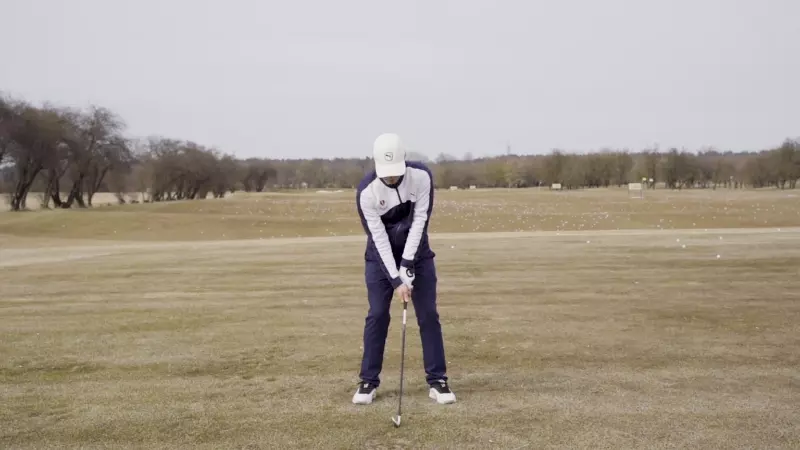
How Does Wrist Position Change During the Golf Swing?
The tough thing about golf is that it’s very hard to start with a flat lead wrist position and then just try and maintain this throughout the entire swing. There are always some movements or changes that happen that will help increase power and even consistency.
The key is to understand how the wrist position changes during the backswing. The more I work with the HackMotion device, the more I realize the importance of the extension/flexion numbers when tracking wrist data.
- Address: at the address, it is acceptable to have your grip in a neutral, strong, or weak position; however, it will impact the rest of the golf swing; a neutral grip makes it easiest to achieve the flat lead wrist consistently.
- Backswing: during the backswing, the goal is to ensure you are not adding any extension in the lead wrist, some golfers are able to decrease extension a bit, and that is a positive.
- Downswing: any extension left in the lead wrist is going to need to be removed so that the position of the clubface at impact is square and the wrist is flat.
- Impact: the most consistent wrist position for solid ball striking is a flat left wrist, slightly bowed left wrists also increase overall power and precision; the real problem is an extended or cupped wrist at impact.
Tips & Drills to Flatten Your Left Wrist
I think by now, I’ve sold you on the importance of a flat lead wrist in golf. The key now is to work on getting yourself into this position.
The HackMotion is the best way to track your progress and monitor your wrist position.
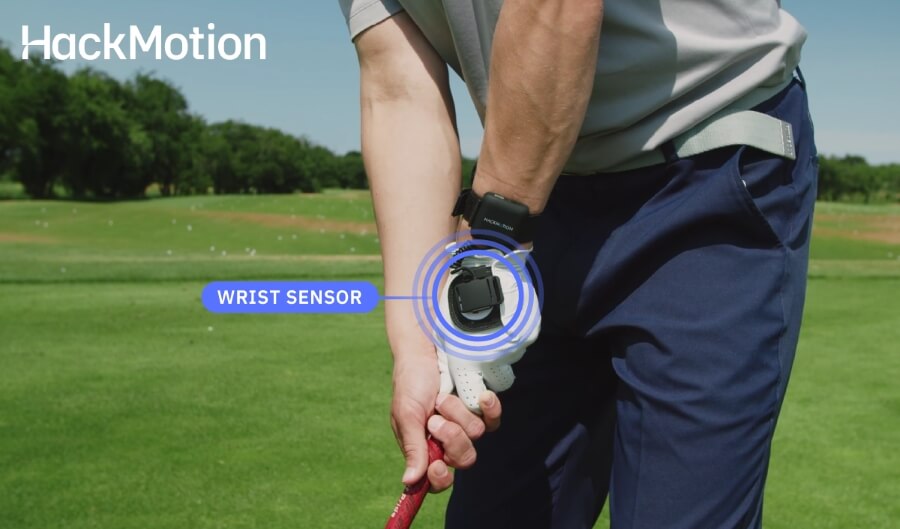
HackMotion Data Analysis
Do you have an issue with your left wrist being flat in the golf swing? Many golfers are completely unaware of mistakes that they are making because they have never measured wrist angles in their swing.
That’s where HackMotion comes in.
Wear the HackMotion device and record some data on your golf swing. Pay specific attention to the amount of extension and flexion that you have in your wrist at setup, top of the backswing, and then at impact.
Use these numbers to set a baseline that you can then improve upon as you work on flattening your lead wrist.
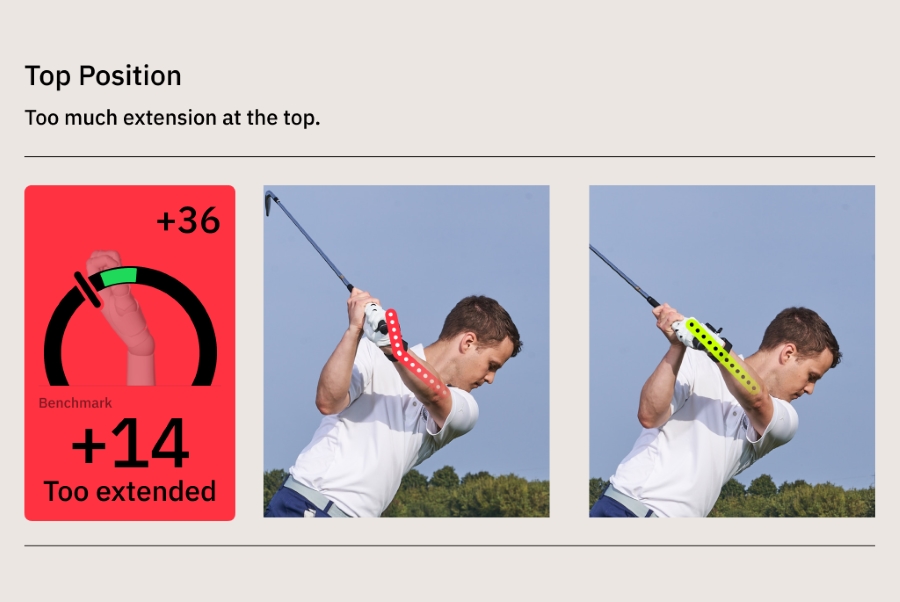
HackMotion Audio Feedback
Once you identify the areas of your swing that need the most help when it comes to wrist position, you can then use the audio feedback feature of HackMotion.
Set a range for your wrist position that helps move you more toward a flat lead wrist. As you swing, you will want to continue to hear the sound coming from the HackMotion device. If the sound disappears, you have moved outside the recommended range.
This audio feedback feature is one of the only real-time feedback tools in the golf industry for wrist position. So much improvement can happen for golfers when the timing of the feedback is lined up with when the movements are made in the swing.
If you take a swing and then watch a video to see the mistakes, a lot of time has already passed, making it difficult for you to make those mental connections.
Impact Bag
An impact bag is a soft-filled bag that is designed to withstand the impact of a golf club. Swing with your golf club and strike the impact bag. To get a solid hit with the impact bag, you will need to have no cupping at impact.
When you strike an impact bag with an extended wrist, the bag will flip up, and it will not have that solid noise or feel. Make sure as you use the impact bag you are checking on your wrist position and the extension/flexion.
Video Analysis
Combining your HackMotion data with a video of your golf swing is quite powerful. The video analysis helps you to see where your wrist is positioned and whether or not it needs improvement. Teaching professional Eric Cogorno shows you exactly what to look for as far as lead wrist position is concerned in this video.
FAQs
To master clubface control, you need your wrists in the proper position. Even if it takes a little extra time to learn and understand wrist angles in golf, it is time well spent.
Here are a few more questions that players often ask about the flat lead wrist.
Should the left wrist be flat at the top of the backswing?
A left wrist that is flat or slightly bowed at the top of the backswing will allow golfers to fire through impact with more speed, better rotation, and more control of their golf shots. An extended wrist position at the top leaves players with more work to do as they move through impact.
Should your left wrist be flat at the address?
The left wrist should not be too flexed or extended, but it doesn’t need to be perfectly flat. As long as the golfer can get to the top of the backswing with a relatively flat lead wrist, the address position can vary slightly.
When should I flatten my wrist in golf swing?
The wrist in the golf swing should be flat at the top of the backswing. From here, it is easier to get to a flat wrist or even a slightly flexed wrist at impact.
Should your left wrist be flat at impact?
The left wrist should be flat or slightly bowed at impact to achieve great distance, straighter shots, and a more piercing ball flight.
Final Thoughts
At this point, you have all the information you need to get out there and start working on your flat lead wrist. The HackMotion allows you to make big changes in wrist position in a very short period of time.
Remember that getting yourself into the proper range of the correct wrist angles is most important. There is no perfect wrist position; instead, you have to follow the patterns that we have identified from the best players in the world.



